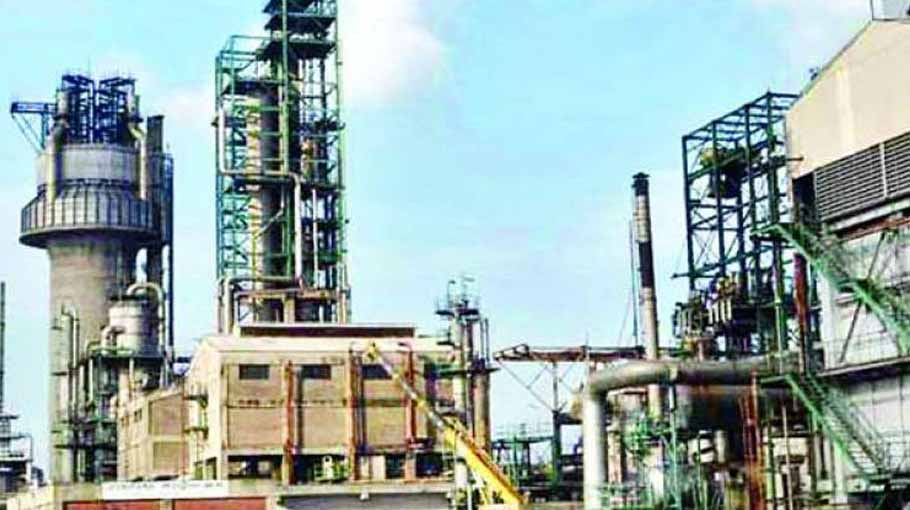Gas crunch hits industries

Production in industries and power plants is being hampered due to acute crisis of natural gas. Other consumers like fertilizer factories, CNG stations, residential and other sectors in the country are also suffering from gas crunch.
The Energy Division is not capable of handling the situation despite gas rationing in different sectors including CNG stations.
According to Bangladesh Oil, Gas & Mineral Corporation (Petrobangla), some 50 crore cubic feet of imported Liqufied Natural Gas (LNG) supply stopped for fault in the terminal since the beginning of December. Domestic gas production has also declined as Chevron, a US multinational company, has recently started renovation at Bibiana, the largest gas filed in the country. As a result, the gas supply has decreased by about 60 crore cubic feet. It will take at least another month to replenish the situation.
Titas Gas Transmission and Distribution Company Limited, the largest gas distribution company, has warned consumers that due to technical reasons, low gas pressure will prevail in Dhaka and surrounding areas from January 12 to 21.
Petrobangla says that the daily gas demand in the country is about 400 crore cubic feet. Even a few months ago, 320 to 330 crore cubic feet of gas were supplied. Now 270 to 280 crore cubic feet of gas is being supplied per day instead of 320 to 330 crore cubic feet of gas supply per day a few months back.
Energy and Mineral Resources division official said that the country has a capacity to supply 100 crore cubic feet of LNG per day through two floating terminals (FSRUs) anchored in the deep sea at Maheshkhali. On November 18, the mooring line at the Summit terminal was torn. Mooring is a permanent structure where a ship is anchored. Summit provided supply up to 10 days of LNG stored in the terminal. Since then the supply has stopped. It is currently being repaired. The summit wrote that it would be launched by February 8. However, the company recently verbally said that it could take another week. Due to the closure of this terminal, the capacity to supply 50 crore cubic feet of LNG per day has decreased. The other terminal is currently supplying 50 to 55 crore cubic feet per day.
Meanwhile, production from the country's gas fields has been declining for several years. Once it produced 270 crore cubic feet of gas, but now its production capacity is about 230 crore cubic feet. Chevron produced about 130 crore cubic feet of gas a day from Bibiana. Now 115 to 120 crore cubic feet of gas is being produced daily from there.
Professor M Shamsul Alam, Energy Advisor of the Consumers Association of Bangladesh (CAB), said, "LNG imports have been made compulsory to provide special facility to some group by creating a gas crisis. The country should give priority to domestic oil and gas exploration to lessen the dependence on imported LNG, but the issue has long been neglected.”
City- dwellers have been suffering from low gas pressure for more than a month. Residents of different areas like Eskaton, Mohammadpur, Mirpur, Paikpara, Rampura, Hatirpul, Jatrabari, Dhanmondi, Kalyanpur and other parts of the city have complained of low gas pressure.
Arjumand Ara Arju, a resident of Eskaton told Bangladesh Post, “We are facing severe problem for cooking due to gas crisis. Most of the time there is no gas in the burner. Moreover, the gas pressure is much lower. More often than not I have to buy unhealthy and expensive food from restaurant.”
Several residents of the capital said that they can not fire burner after 6-7 am due to gas crisis. The gas is available around 3-4pm. After a while it is gone again and back around 10 o'clock at night when many people fall asleep. As an alternative, those who are a little more affluent have resorted to cylinders or electric stoves, but the middle and lower classes are suffering a lot.
Currently, a total of 27 power plants having capacity of more than 4,000MW of electricity are shut down due to gas crisis. Besides, Urea Fertilizer Factory Limited is also shut down due to gas shortage.
The situation in the industry is almost the same. Many owners are considering closing the factory due to inadequate gas supply.
The gas crisis has resulted in large production loss and halt of production, deterioration of product quality and loss of expensive machinery have taken place.




